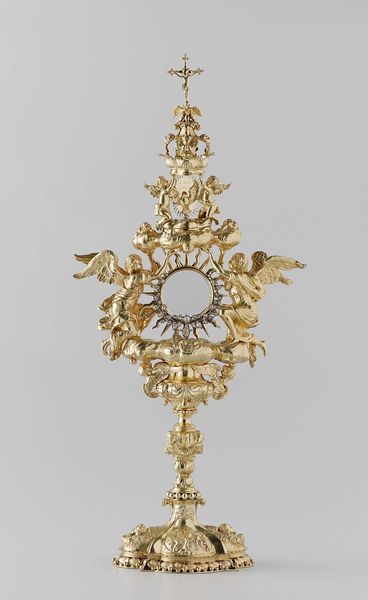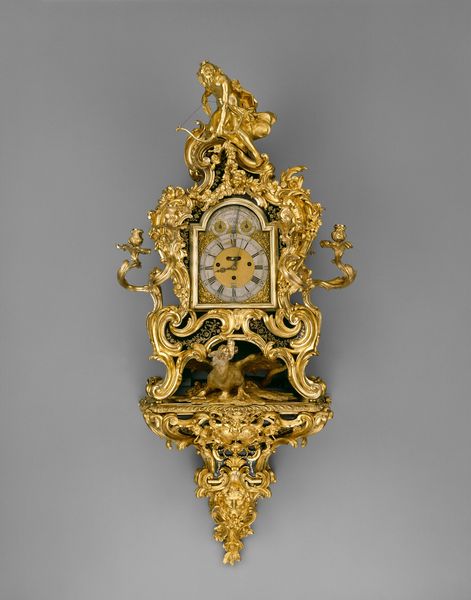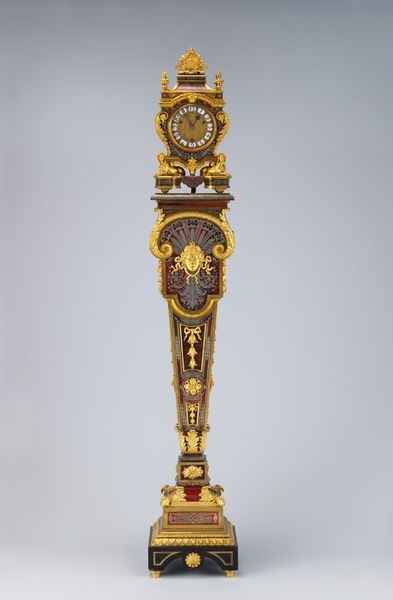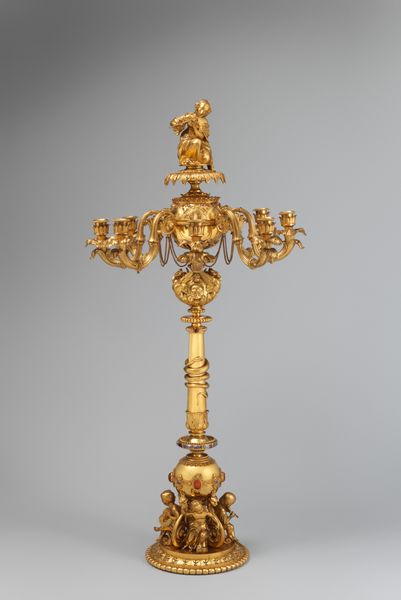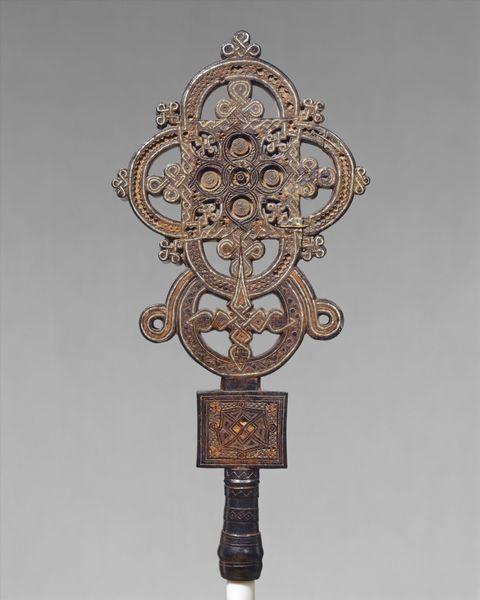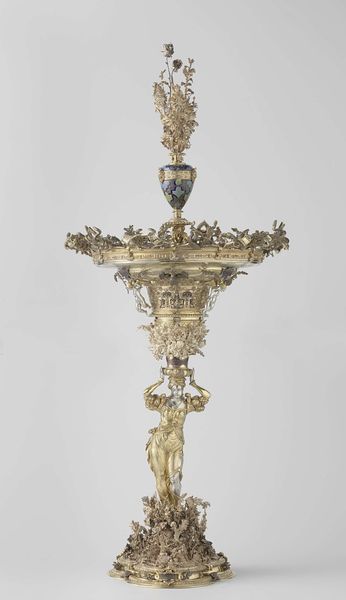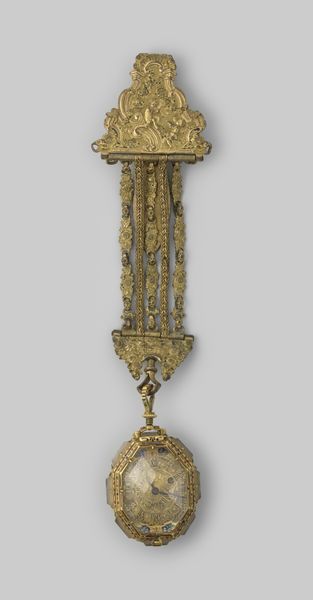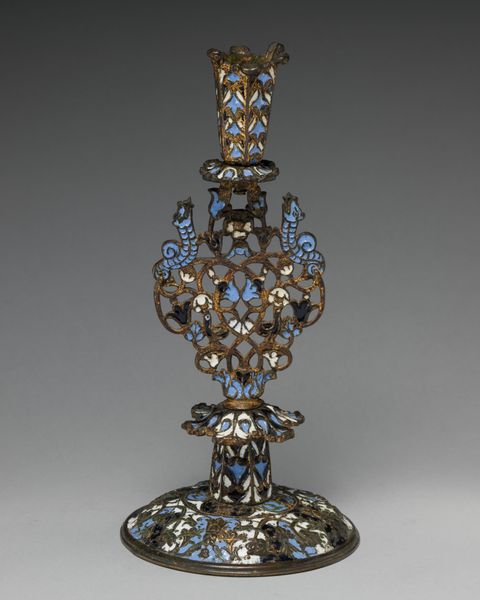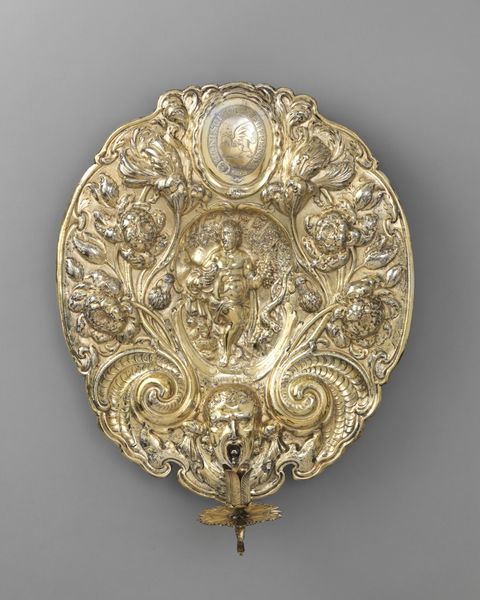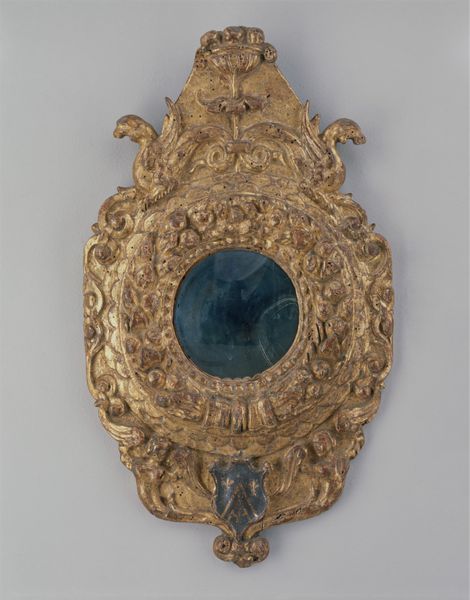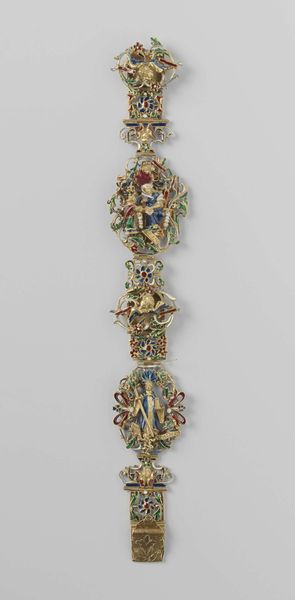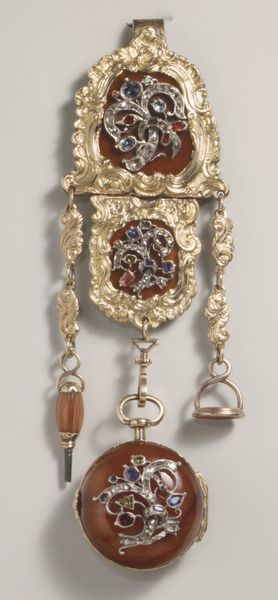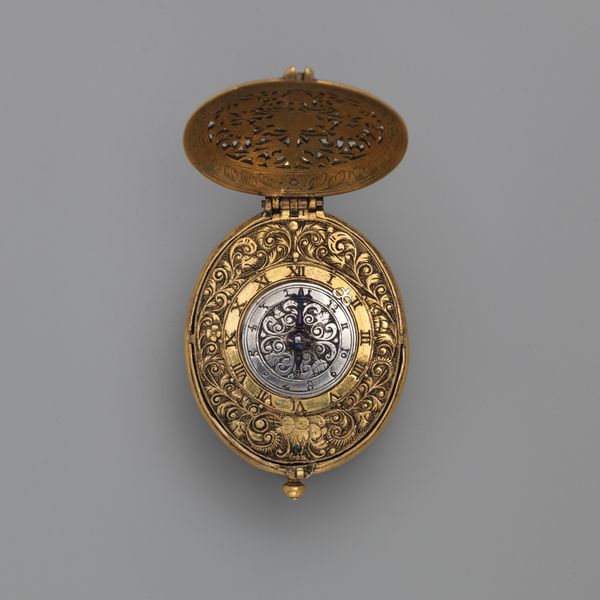
brass, glass, sculpture
#
brass
#
glass
#
sculpture
Dimensions: 34 x 14-11/16 x 14 in. (86.4 x 37.3 x 35.6 cm)
Copyright: Public Domain
Curator: Well, here we have the Monstrance, crafted around 1851, and currently residing at the Minneapolis Institute of Art. Editor: Immediately striking is the intricate design; it feels both delicate and powerful. The glass center, framed by radiating brass and cobalt-colored enamels, holds a certain mystical quality. Curator: Yes, these objects played a vital role in Catholic religious practices, specifically during Eucharistic adoration. The glass case in the center would display the consecrated host. We should also point out it's not solid gold or silver but brass, likely used in less wealthy communities or parishes. Editor: That brings a vital perspective – brass monstrances are a reflection of the socio-economic status of the commissioning church. Were these beautiful but materially modest objects trying to assert religious dominance or provide access for the common people? It seems essential to question the politics embedded within this aesthetic beauty. Curator: Interesting perspective. Now, the craftsmanship here is rather meticulous. The piece is dominated by flowing foliate and curvilinear patterns. Considering the political tumult in Europe at that time, particularly revolutions of 1848, the piece seemingly opts for an expression of serene religiosity. Editor: Exactly. But what kind of serenity? Is it meant to create a peaceful distraction? Religious objects are also very important symbolic statements, and what this implies, or rather omits, tells its own story. The choice of form and ornament says a lot about how its original consumers perceived and positioned themselves in a climate of change and disenfranchisement. Curator: It's hard to disagree that material culture speaks to class and identity. Seeing the piece with all this in mind enriches how one interprets the object as more than a mere beautiful relic of the past. Editor: Right, appreciating this monstrance with a critical eye offers us insights into a society's anxieties and aspirations. It compels us to think deeper than its literal surface.
Comments
minneapolisinstituteofart almost 2 years ago
⋮
A monstrance is used to display the consecrated host during the Blessed Sacrament in a Roman Catholic church or in a procession for Adoration of the Blessed Sacrament. This example, or a nearly identical one, was part of an award winning altar service shown by the firm of Poussielgue-Rusand at the London Crystal Palace Exhibition in 1851, an influential exposition of industrial arts from around the world. The Art Journal Illustrated Catalogue of the Exhibition describes Poussielgue-Rusand as one of the most extensive European manufacturers of chandeliers, chalices, and other ecclesiastical furnishings, and this monstrance is referred to as "an elaborate and rich piece of workmanship of very elegant and novel design."
Join the conversation
Join millions of artists and users on Artera today and experience the ultimate creative platform.
